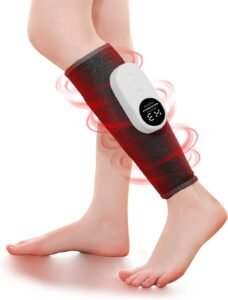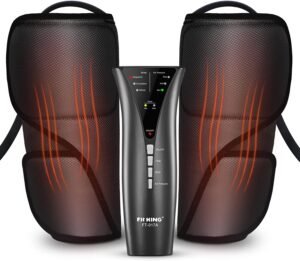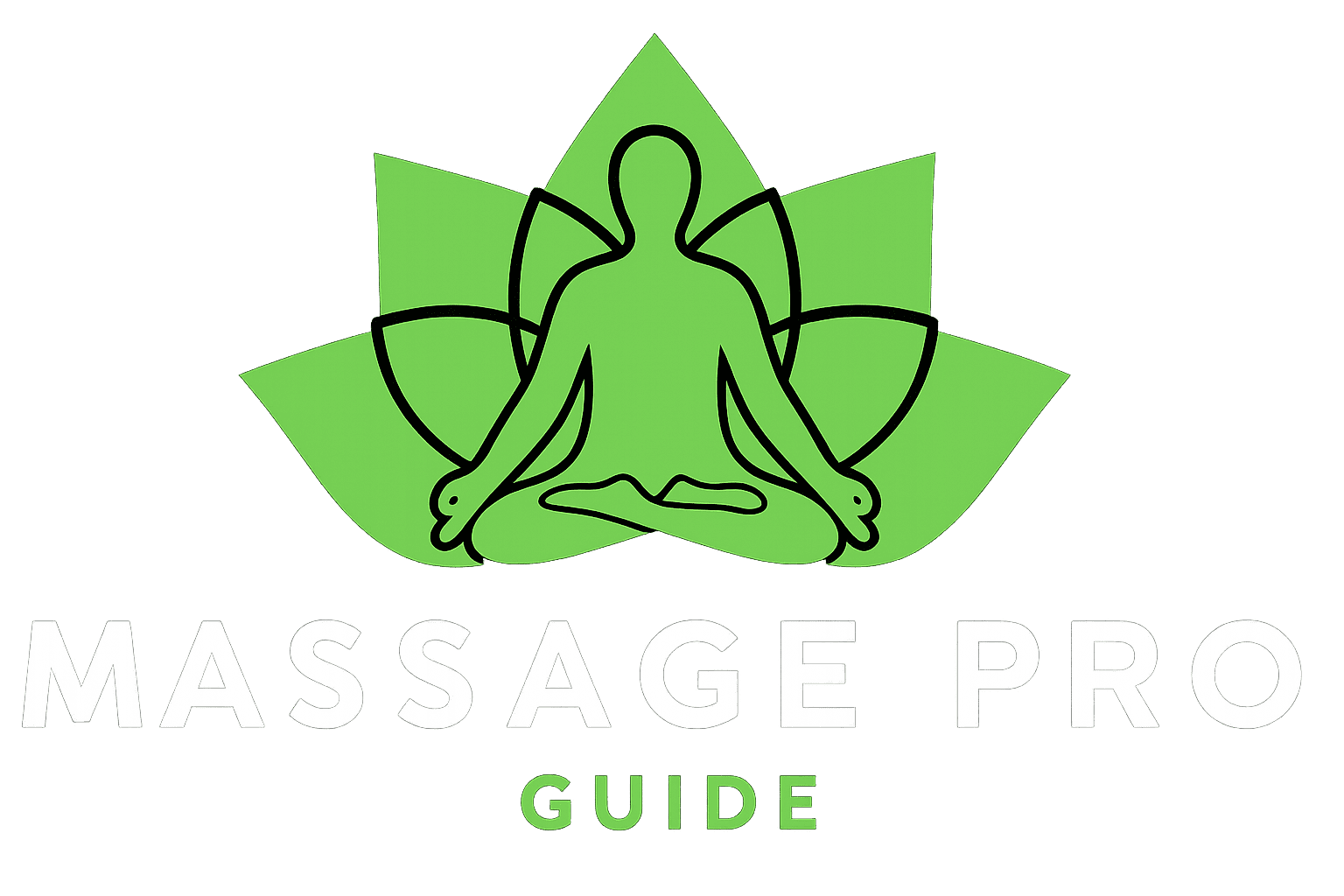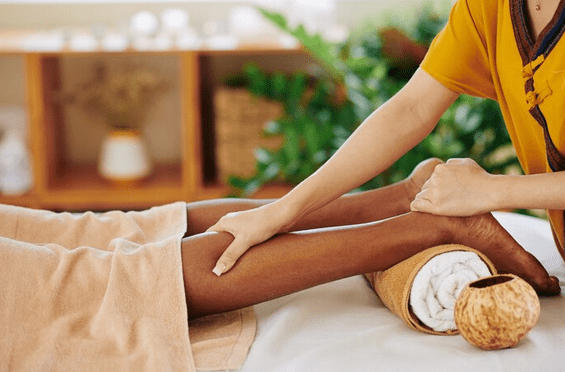Are you familiar with the acute pain or discomfort you feel when rubbing your calves? If so, you are not alone. Many people are confused about why something meant to be relaxing may occasionally cause such distress. In this blog article, we will investigate the causes of unpleasant feelings during calf massage and look at practical strategies to find relief.
Our calves have a complicated network of muscles, tendons, and fascia, making them prone to stress, knots, and sensitivity. Muscle strain, more profound tissue sensitivity, inflammation, and injury can contribute to the discomfort felt during the massage. But don’t worry; we’ll also provide helpful hints on how to avoid pain and enhance the advantages of calf massage.
Join us as we unravel the mystery behind calf massage pain and empower you to enjoy a more soothing and rewarding massage experience.
Potential Causes of Discomfort During Calf Massage
Table of Contents

A. Muscle Tension and Knots
Muscle knots, or trigger points, are stiffness and tension within the muscle fibers. These knots can form due to various reasons, such as repeated actions, overuse, poor posture, or muscle imbalances. Muscles that become strained or stressed may contract and form these tight knots.
The presence of muscular tension during calf massage might heighten the sensation of discomfort. Applying pressure to the damaged region might cause discomfort and even transfer pain feelings. During the massage, force is given to muscular knots to release tension and relieve discomfort produced by these trigger points.
B. Deeper Tissue Sensitivity
Within the deeper layers of the muscles, the calf area contains delicate structures such as nerves, blood vessels, and connective tissues. These structures boost sensitivity during the massage. The nerves in this region may be more sensitive to touch and pressure, resulting in increased pain.
The abundance of nerve endings and blood vessels in the calf muscles makes them more sensitive to external stimuli. The presence of these nerve terminals enhances pain perception during massage. Additionally, the blood vessels supply oxygen and nutrients to the calf muscles, and any inflammation or injury can lead to increased sensitivity and pain response during the massage.
C. Injury or Inflammation
Calf injuries, such as strains, sprains, or muscular tears, can cause pain during massage. Inflammation, edema, and tissue damage can result from these injuries, making the afflicted region more sensitive and prone to discomfort during manipulation. Before beginning calf massage, treating any existing injuries or irritation is critical.
Inflammation is the body’s natural response to injury or stress. Inflammation in the calf muscles might cause increased pain sensitivity during massage. When pressure is applied to inflamed tissues, they become more responsive and reactive, generating more discomfort.
Understanding the different sources of discomfort during calf massage enables more specific approaches to pain relief and maximizing the benefits of the massage session.
Read: techniques to Massage Someone with Rheumatoid Arthritis
Tips to Minimize Discomfort and Maximize Benefits

Warm-up and Stretching
Warming up the muscles before calf massage is essential for reducing pain and increasing the efficiency of the massage. Start by performing light aerobic exercises or a brief warm-up routine, such as brisk walking or gentle calf stretches. These exercises enhance blood flow to the muscles, which makes them more supple and responsive to massage treatments.
In addition, stretching exercises that target the calf muscles can assist in relaxing stiffness and minimizing pain. Simple stretches such as standing calf raises, calf wall stretches, and sitting calf stretches can help. Remember to perform these stretches gently and gradually to avoid strain.
Communication with the Massage Therapist
Communication with your massage therapist is critical for reducing discomfort during calf massage. Discuss your comfort level, pre-existing diseases, or past injuries that may impact the massage experience before the appointment. Inform the therapist about your pain tolerance and any specific areas of concern.
During the massage, provide feedback to the therapist regarding the pressure and discomfort levels. Effective communication allows the therapist to change their technique and pressure to fit your requirements and make the encounter more pleasant.
Gradual Pressure and Technique Adjustment
When getting a calf massage, the therapist should apply pressure gradually and vary techniques based on your comfort level. Starting with lighter pressure helps the muscles to adjust and relax progressively. The therapist can then slowly raise the tension until it is tolerable.
Massage methods such as Swedish massage, deep tissue massage, or myofascial release might be used to address specific issues. The therapist may combine techniques or modify their approach based on your feedback and individual needs.
Remember that excellent communication is also essential in this situation. If you experience any discomfort or pain throughout the massage, please notify the therapist so that they can change their techniques accordingly.
Post-Massage Care
After a calf massage, engaging in post-massage care is essential to minimize any residual discomfort and optimize the benefits of the session. Try mild self-massage with your hands or a foam roller to relieve any excess tension.
Perform post-massage exercises that target the calf muscles to increase relaxation and flexibility. Concentrate on stretches that lengthen and relax the calf muscles.
Hydration is also essential for muscle rehabilitation. Drink lots of water following the massage to wash out toxins and encourage healthy muscular function.
Using these post-massage care techniques may extend the benefits of the massage and decrease any potential pain. In the next part, we will examine when seeking professional help to alleviate severe or chronic discomfort during calf massage is essential.
Read: Can Neck Massage Cause Vertigo
Conclusion
In conclusion, understanding the reasons behind the discomfort experienced during calf massage empowers you to find relief and enjoy a more comfortable experience. By recognizing the role of muscle tension, knots, more profound tissue sensitivity, inflammation, or injury, you can work towards addressing these issues effectively.
Remember to incorporate warm-up exercises and stretching routines to prepare the muscles before massage. Open communication with your massage therapist is crucial in tailoring the session to your comfort levels and preferences. Gradual pressure application and technique adjustments ensure a more enjoyable experience.
After the massage, practicing self-care with post-massage stretches and gentle self-massage can help alleviate residual discomfort. Hydration plays a vital role in muscle recovery.
By following these tips and seeking professional guidance when necessary, you can enhance the benefits of calf massage while minimizing discomfort. Embrace calf massage’s soothing and therapeutic power for a more relaxed and rejuvenated you.

